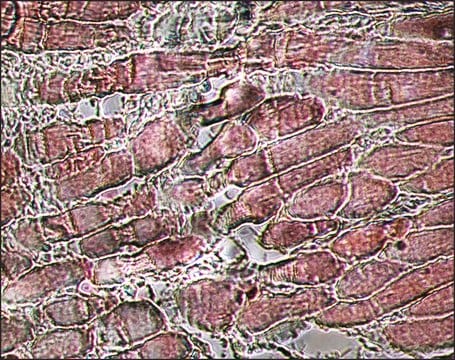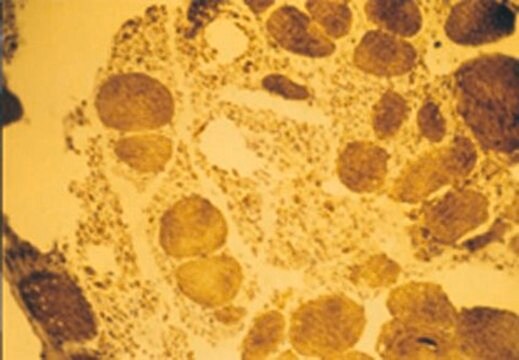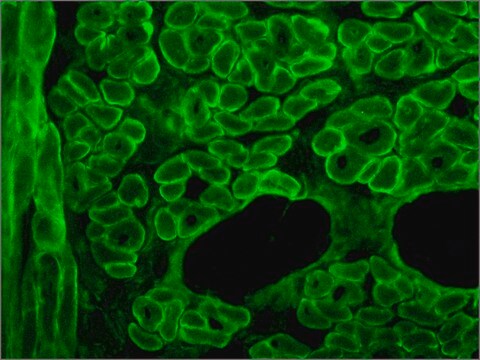M4276
Monoclonal Anti-Myosin (Skeletal, Fast) antibody produced in mouse
clone MY-32, ascites fluid
Sinónimos:
Anti-Myosin Antibody
About This Item
Productos recomendados
origen biológico
mouse
conjugado
unconjugated
forma del anticuerpo
ascites fluid
tipo de anticuerpo
primary antibodies
clon
MY-32, monoclonal
contiene
15 mM sodium azide
reactividad de especies
rat, chicken, rabbit, mouse, human, bovine, guinea pig, feline
técnicas
immunohistochemistry (formalin-fixed, paraffin-embedded sections): 1:400 using skeletal muscle tissue
indirect immunofluorescence: 1:400
western blot: 1:1,000 using rabbit leg muscle extract
isotipo
IgG1
Condiciones de envío
dry ice
temp. de almacenamiento
−20°C
modificación del objetivo postraduccional
unmodified
Información sobre el gen
human ... MYH1(4619) , MYH2(4620)
mouse ... Myh1(17879) , Myh2(17882)
rat ... Myh1(287408) , Myh2(691644)
¿Está buscando productos similares? Visita Guía de comparación de productos
Descripción general
Especificidad
Inmunógeno
Aplicación
- immunohistochemistry
- immunostaining
- western blotting at a dilution 1:1000 and 1:90000†
- indirect immunofluorescence (dilution 1:400) of formalin-fixed, paraffin-embedded sections of human or animal skeletal muscle tissue preparation.
- dot immunobinding on muscle extracts or purified myosin preparations
Cláusula de descargo de responsabilidad
Not finding the right product?
Try our Herramienta de selección de productos.
Código de clase de almacenamiento
10 - Combustible liquids
Clase de riesgo para el agua (WGK)
WGK 3
Punto de inflamabilidad (°F)
Not applicable
Punto de inflamabilidad (°C)
Not applicable
Certificados de análisis (COA)
Busque Certificados de análisis (COA) introduciendo el número de lote del producto. Los números de lote se encuentran en la etiqueta del producto después de las palabras «Lot» o «Batch»
¿Ya tiene este producto?
Encuentre la documentación para los productos que ha comprado recientemente en la Biblioteca de documentos.
Los clientes también vieron
Nuestro equipo de científicos tiene experiencia en todas las áreas de investigación: Ciencias de la vida, Ciencia de los materiales, Síntesis química, Cromatografía, Analítica y muchas otras.
Póngase en contacto con el Servicio técnico















